
Photo by Alberto E. Rodriguez/Getty Images for Turner.
Gina Lollobrigida is serious about being taken seriously. She refuses to downplay her accomplishments as an actress (in 3 languages), a photojournalist, and a sculptor.
In a world that continues to underrate and undervalue the creativity of women, a world that respects a woman’s competence more if she renounces her femininity, Lollobrigida’s unapologetic self-worth shines.
On the red carpet at the TCM Classic Film Festival, I got to ask many special guests about their most moving experiences in the industry. I heard stories about tearjerking melodramas, poignant comedies, and controversial dramas.
But Lollobrigida gave me the most inspiring reply of the evening.
Resplendent in a gold-trimmed hot pink gown, she leaned in to share an emotional memory—not a sad story, but a personal triumph. Cast in the fin-de-siècle farce Hotel Paradiso (1966), Lollobrigida worried about measuring up to her prestigious costar.
“I was afraid, because Alec Guinness was a great actor,” she recalled. “So I was very much prepared—and when we had a reading just before the shooting, everybody had a script. I knew it by heart! Alec Guinness and the director couldn’t believe it.”
She grinned, glowing with the pride of a true pro. “I impressed them!”

I’ve been turning that story over and over again in my mind. Terrified of being underestimated, Lollobrigida outpaced her colleagues. It’s a story of insecurity used as rocket fuel, a story of exceeded expectations. A story that I think most women on Planet Earth can relate to.
Classical cinema invites us to contemplate (and consume) movie stars, especially actresses, as fully-formed demigods, removed from the tribulations of mere mortals. Even “candid” shots churned out by the studio publicity departments reinforce impossible ideals of natural elegance, poise, and domesticity. Hollywood’s magic largely depended on the erasure of real blood, sweat, and tears. You have to train yourself to appreciate the ambition and craft that stars brought to their careers and performances, the effort required to appear effortless.
The TCM Classic Film Festival gives living legends a chance to take their bows as resilient human beings who sustained all those glorious illusions. Lollobrigida, more than any other old Hollywood icon I’ve seen in person, made me aware of the sheer hard work involved in movie acting and star maintenance. At 87, she is both a survivor and a siren. She deserves recognition not only for her glamour, but also for her grit.
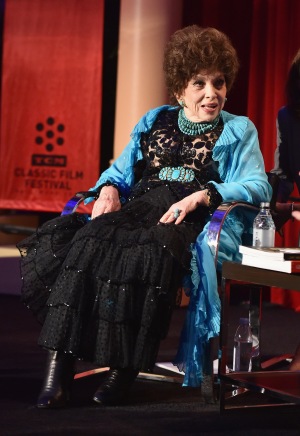
Photo by Mike Windle/Getty Images for Turner.
At Club TCM, Lollobrigida sat down for an hour-long conversation with Leonard Maltin and expressed some gutsy feminist beliefs. La Lollo explained that a woman must work doubly hard to earn respect and make progress: “You know, the steps for a woman to go ahead, it’s so difficult. As if a man has two brains and us one brain. I mean, it’s ridiculous. We are equal!”
She had to fight the idea that beauty and talent are somehow mutually exclusive. “I started as a beautiful woman and then suddenly I was a photographer. It was so difficult [for others in the industry] to say, ‘She’s not bad, you know?’ The third time, the third success, sculpture, that was too much.”
From childhood Lollobrigida showed artistic promise. And that’s why she didn’t consider a career in movies until much later. When approached to be an extra in a film, she initially rejected the offer: “I thought that cinema was not art at all, so I said, ‘I’m not interested.’” However, when she learned that the job paid 1,000 lire a day, she couldn’t refuse the chance to support her family in post-WWII Italy.
On the set, Lollobrigida attracted attention—too much, in fact. “When I started as an extra, it was not easy because then I made a double for the star,” she said, “but under the lights I looked even better than the star. So she fired me!”
A kind makeup man gave her the chance to work as an assistant to the studio hairdresser. After taking third place in the 1947 Miss Italy pageant, Lollobrigida won leading roles. And in 1950 Hollywood came knocking, in the form of Howard Hughes.
His designs on her quickly became clear. “He made me come to Los Angeles. First there were two tickets—for me, for my husband—then one ticket. He changed his mind,” Lollobrigida wryly notes. “But my husband said to me, ‘Don’t worry, I trust you. Go ahead, because I don’t want you to be telling me tomorrow that I’ve forbidden you from being a star in the movies.’”

Photo by Mike Windle/Getty Images for Turner.
Lollobrigida recalled Hughes’s famous eccentricity. He wore mostly crude work clothes despite his fabulous wealth. His language wasn’t exactly refined either. “My English was not so good, so he helped me, especially with the bad words,” Lollobrigida said.
“I had to prepare myself to make an acting test, but I never did it because he wanted me… anyhow.” She stayed in Hollywood for 2 months before deciding to leave Hughes and return to Italy. What happened exactly? For now, Lollobrigida prefers to keep that a mystery. “He had a good time with me. The rest I will tell you later… in my bio,” she confided. (And, in the unlikely event that you’re reading this, Gina, please do write your memoirs!)
Back in Europe, Lollobrigida scored her first success in a French film, the comic swashbuckler Fan-Fan la Tulipe (1952). Although she always expected that she’d have to adopt a screen name, Fan-Fan made Lollobrigida famous under her birth name.
“When we were doing it, I didn’t have a name as an actress, and Gina Lollobrigida, my God, it’s very complicated,” she laughed. “So I said, ‘Put anything you want.’ But then it was too late, they’d already made the titles with Gina Lollobrigida.”
A catchy nickname cut out a few syllables for actress’s colleagues (and the press): “They called me, to make it quicker, Lollo. So even now when I answer on the phone, instead of saying, ‘Gina’ or ‘Gina Lollobrigida,’ I say ‘Lollo.’”
Her big break in English came in 1953 with the caper parody Beat the Devil, directed by John Huston and written by Truman Capote. But producer David O. Selznick had reservations about Lollobrigida at the last minute.
As she tells it, “I was very excited. The first day he was in Italy the producer called me and said, ‘Oh, Miss Lollobrigida, we don’t really need you. You can have all the money and not do the movie.’ I said, ‘I don’t care, Mr. Selznick. I will do the movie because I have a contract.’ So I stayed.”
Why did Selznick attempt to cut out a rising star? “He was afraid that I was too beautiful near Jennifer Jones.”
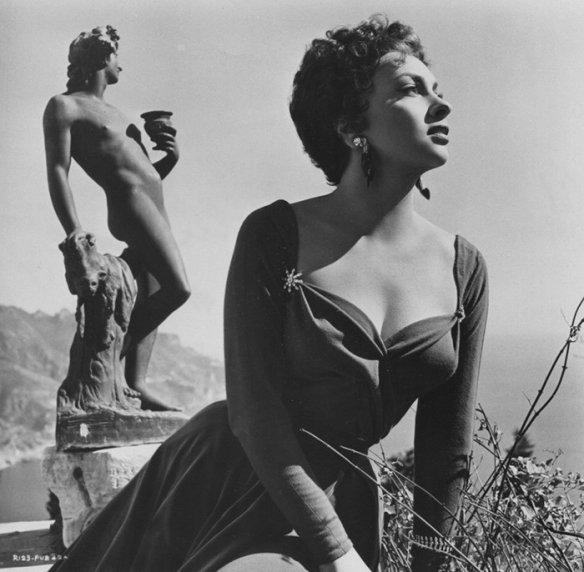
Lollobrigida studied for months to act in her third language. “I called the University of London and said I’d like a teacher for my English, especially the accent, so I had more than I needed answer, they wanted to all come to my home and have a good time,” she chuckled. “So I chose a young girl, and she stayed with me for almost a year. When she went away, she could speak Italian perfectly.”
Though Lollobrigida didn’t feel entirely comfortable with her English dialogue, her sultry, exotic delivery set just the right note for her character—and prompted some sage advice from her costar. “Bogart said to me, ‘Don’t study English any more. If you lose this beautiful accent, it would be a pity.’”
Lollobrigida fondly remembered Bogart and their humorous onset rapport. “He was very friendly, but sometimes he was talking to me like that [loudly, moving her arms], and I thought he was angry. I didn’t understand that it was a joke. So, finally when I understood that it was a joke, I did the same joke to him in Italian.”
(And here the Club TCM audience burst into raucous laughter imagining Lollobrigida scaring the bejeezus out of Bogie with torrents of aggressive Italian.)
The Bogie that Lollobrigida knew, a man very much in love and accompanied by Lauren Bacall, contrasted with his brooding onscreen persona. “He was completely different from the character that you see in the movies. In all of the films he was very serious, very tough. But you could see him in the morning coming down the steps singing happily.”

The young actress relished John Huston’s laid-back direction. “He respected the actors and he had a system to leave the actors to do and say even something that wasn’t in the script. He wanted the actors to feel free.”
She also sparked a friendship with Truman Capote which would last until his death. “We were very close. When he came to Italy, I thought that he looked like a young boy. And when I saw him just before he died he looked like an old man.”
In the mid-1950s, Lollobrigida proved her fearlessness as a performer in two surprising ways: by singing opera and flying on a trapeze!
Starring in Beautiful But Dangerous (1955), a biopic of opera star Lina Cavalieri, Lollobrigida panicked when the producer suggested that she sing in the film.
Though she had a trained voice, the actress didn’t know if she could do justice to Cavalieri’s legend. The producer encouraged Lollobrigida to try… and assembled a 50-piece orchestra for the occasion. Trembling, she sang “Vissi d’arte” from Tosca, accompanied by the skeptical group of musicians. “I did the first take and was very good. The orchestra started to applaud. So it was a miracle.”

To Lollobrigida’s dismay, American reviewers assumed that she’d been dubbed. “The film came to New York. Bosley Crowther said, ‘What a beautiful voice. It’s a pity it’s not her.’ That was my voice!” She exclaimed. Even those close to La Lollo could hardly believe it. “My friend Maria Callas said, ‘It’s you?’”
So, let’s set the record straight, once and for all. Lollo does her own signing. Watch and be wowed.
Hollywood beckoned, but the ghost of mansplainers past rose to sabotage Lollobrigida. “I couldn’t come because, with that contract with Howard Hughes, he was making war against me. He was saying to all of the studios that they couldn’t use me, because I was property of him, like an object.” The subtle bitterness of her words betrayed how frustrating it must have been for Lollobrigida. That memory, the indignity of being Hughes’s virtual possession, still stings, 60 years later.
Undaunted, La Lollo bided her time and gained momentum on the Continent, in spite of Hughes. “He was not strong in Europe as he was in the United States.”
Lollobrigida signed up for Trapeze (1956) because, “they offered me so much money I had to say yes!” She would more than earn her keep over weeks of extensive training and a challenging shoot.

“They sent to me a trapeze, to my villa in Rome, and for 6 months I rehearsed. I realized that, my God, if you try to fly, you must have muscles! I mean, it’s dangerous even to fall on the net,” she recalled with a shudder. “If you fall straight, you can break your ankle.”
The actress jumped into the daredevil demands of her role from her first day on the set. “They were trying the triple summersault, so the trapeze wasn’t at the same level as everyday, but higher! So they said, “Come up!” I went up. The professional people, they go up 15 days before they fly…. But the second day, I lost my voice. I couldn’t talk anymore. But I did it!”
Lollobrigida gladly took risks over the course of the production: “I wanted to do everything!” But sometimes it wasn’t a matter of choice. “I had two doubles, but the one that looked like me broke her nose. So I had to be the double for the double of me! And I was glad.”
She praised Trapeze’s director Carol Reed, particularly his flair for widescreen composition. “The Cinemascope was new at the time, to have the screen very, very long. He was telling one story on one side and another story on the other side.”

Burt Lancaster, the film’s major star, was also the producer, which led to some behind-the-scenes tensions. “He started to direct the actors. I was nervous because I respected Carol Reed as a director. It was not fair to replace Carol Reed. So I was waiting my turn for him to direct me, but I stopped him. I said, ‘Mr. Lancaster, I came here to be directed by Carol Reed.’ He was embarrassed, but then he realized that he was wrong. And so we became friends again.”
The actress’s feistiness and her lack of tolerance for other stars’ entitlement flared up again when she worked with Sinatra on Never So Few (1959). From the first, his stipulations slowed down the shooting schedule.
“He wanted to be free in the evening, probably to have a good time. And he wanted to start at twelve o’clock. I said, ‘I can start at nine o’clock so we can save some money.’ And they said, ‘No. Miss Lollobrigida, you are already a star and you will be treated like a star.’”
She grudgingly accepted the star treatment à la Sinatra. “But one time he was one or two hours late. So I made a joke to him, but he didn’t understand. I said, ‘Next time that you want to come late, call me at six o’clock in the morning, so I can go to sleep again.’” The crack hit home a little too hard for Sinatra, who acted wounded for days.
 In the late 1950s, Lollobrigida had to cope with more emotionally-draining experiences than the occasional sulky costar, however. When Leonard Maltin asked about Solomon and Sheba (1959), Lollobrigida recounted the ordeal of shooting the ill-starred Biblical epic.
In the late 1950s, Lollobrigida had to cope with more emotionally-draining experiences than the occasional sulky costar, however. When Leonard Maltin asked about Solomon and Sheba (1959), Lollobrigida recounted the ordeal of shooting the ill-starred Biblical epic.
She enjoyed a close friendship with Tyrone Power, who may have sensed the end was near for him. “I remember one night, it was two o’clock, he called me, and I said, ‘My God, what’s happening?’ He said, ‘I can’t sleep. I must tell you what a pleasure it is to work with you.’”
On the fatal day, Power had some philosophical words for her. “He had to do a duel with George Sanders. He probably had a heart attack, and he stopped.” The actor came and sat in the trailer with Lollobrigida who was nervously studying her lines. “I was afraid that something would go wrong. And he said, ‘Don’t worry. Life goes on anyhow.’ Then he said, ‘I don’t feel really very well.’”
After almost an hour of boisterous storytelling, Lollobrigida’s voice grew quiet as she relived that horrible day on location.
“I did not know what to do, so I gave him my shawl, so he would be warm. And the car was not there. So I said, ‘Take my car. Go to the hospital.’ And they take him to the car, and he died there.
“The poor makeup man had to take his paint off, and he was young. He died and suddenly he looked much younger.”
Shocked by Power’s death and exhausted by months of filming on location, Vidor had to reshoot most of the film, his last feature. According to Lollobrigida, Vidor was a shadow of his former self. “At any age you can be old. He was, my God, a fantastic director. But by that movie he was dead already.”
So the leading actors stepped in to finish the big-budget movie: “We directed the film. Me if I was alone, me and Yul Brynner if we were together. I mean, these are things that you don’t say, but that’s what happened.”
Perhaps you’re noticing a pattern here? No trapeze is too high, no male ego too big, no obstacle too great, no tragedy too heartbreaking to stop Gina Lollobrigida.
Though the censors tried.
The moralizing blue-pencil brigade of Production Code-era Hollywood took issue with La Lollo’s curvaceous figure. Looking back, the actress can hardly believe the tame material that censors scissored. “The films that I made were very noble,” she insists. “You could see them in church! But the censor was ridiculous.”
 Lollobrigida’s décolletage raised such objections that her family tried to intervene. “Even my mother said, ‘Gina, please, be careful! Not so low.’ Now they’re naked on the street!”
Lollobrigida’s décolletage raised such objections that her family tried to intervene. “Even my mother said, ‘Gina, please, be careful! Not so low.’ Now they’re naked on the street!”
Censor meddling clearly made Lollobrigida’s blood boil, no doubt because she took great pains to preserve the integrity of her performances. Lollobrigida did all her own foreign-language dubbing, a fairly rare accomplishment at the time. “If I was doing it in Italian, I dubbed it in French and English. If I was doing it in English, I dubbed in French and Italian,” she says. “I wanted to protect what I did.”
She applied herself to foreign-language dialogue until it became second nature. As she explained, “you have to know the words like, ‘Ave Maria, piena di grazia…’” In other words, like a prayer.
Lollobrigida acknowledged the screenwriters who gave her a hand in shaping her characters’ dialogue. “They tried to use my suggestions even if I had to change something for the character. I didn’t want more words or less words. I wanted the character to be right. Because instead of acting, I was being as close as possible to the character I was playing. That’s why I was lucky to have all important women characters—all different.”
Indeed, from the doomed queen of an ancient empire to a canny single mother and entrepreneur, Lollobrigida’s roles run the gamut from grim to hilarious. “It’s easier to do drama than comedy,” she confessed. Which makes her breezy comedic timing in films like Hotel Paradiso and Buona Sera, Mrs. Campbell all the more impressive.

By the late 1960s, Lollobrigida decided to move on to the next phase of her career: photography. “When there was not so many scripts as good as before, I thought, ‘It’s better that I do photography or sculpture,’ which was my real love. And I thought that by going away and doing something different I wouldn’t be in the eyes of the public any more, but I was surprised, because anytime I was in public, the actress was in front all of the time.”
Lollobrigida wished that she had taken up professional photography sooner and captured portraits of her contemporaries, especially Marilyn Monroe. “We were very friendly when I was living in Los Angeles…. She deserved the success she had. It’s a pity that she became so famous after.”
After touring her beloved home country in disguise, Lollobrigida released her first book of images, Italia Mia, and won the Nadar International Prize. Traveling to Cuba, Lollobrigida secured an exclusive interview with Fidel Castro. In India, she forged a friendship with Indira Gandhi and photographed her. She shot portraits of Salvador Dali, Paul Newman, and Audrey Hepburn, among others. “I really grew up with photography,” she remembers, “going all over the world with my camera.”
 She also proudly pointed out that she had anticipated Photoshop and digital image enhancement by manually adding color to her photographs.
She also proudly pointed out that she had anticipated Photoshop and digital image enhancement by manually adding color to her photographs.
Nevertheless, Lollobrigida admits that she doesn’t care much for modern art or movies.
“In the cinema technically, it’s unbelievable the progress that they’ve made. But I prefer that the story is the important thing,” she explains. “I want to be moved. If there is no emotion, it’s not art for me.”
Once the thunderous applause from the Club TCM audience settled down, Leonard Maltin cheerfully told the star that she was preaching to a choir of diehard classics fans.
She smiled. “So I didn’t say something new, but I have the guts to say it.”
But does the multitalented Lollobrigida regret all her hard work in the realm of cinema—something that she didn’t even consider a proper art form back in 1946? It would seem not.
“I gave the best years of my life to the movies,” she remarked, unprompted, in the middle of the interview, “and I met incredible, talented people, so I’m glad.”
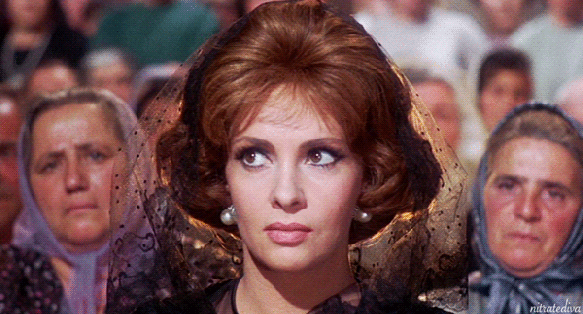
 Biting one of the most famous people in the world, even if they know you have to do it for a movie, would be a daunting prospect for most people.
Biting one of the most famous people in the world, even if they know you have to do it for a movie, would be a daunting prospect for most people.








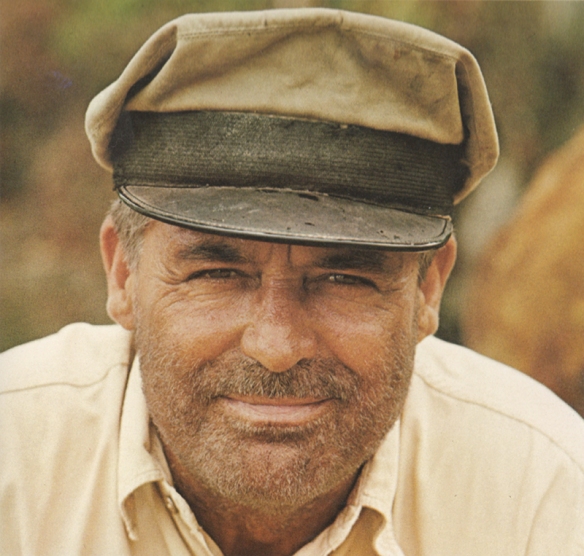










 In the late 1950s, Lollobrigida had to cope with more emotionally-draining experiences than the occasional sulky costar, however. When Leonard Maltin asked about Solomon and Sheba (1959), Lollobrigida recounted the ordeal of shooting the ill-starred Biblical epic.
In the late 1950s, Lollobrigida had to cope with more emotionally-draining experiences than the occasional sulky costar, however. When Leonard Maltin asked about Solomon and Sheba (1959), Lollobrigida recounted the ordeal of shooting the ill-starred Biblical epic. Lollobrigida’s décolletage raised such objections that her family tried to intervene. “Even my mother said, ‘Gina, please, be careful! Not so low.’ Now they’re naked on the street!”
Lollobrigida’s décolletage raised such objections that her family tried to intervene. “Even my mother said, ‘Gina, please, be careful! Not so low.’ Now they’re naked on the street!”
 She also proudly pointed out that she had anticipated Photoshop and digital image enhancement by manually adding color to her photographs.
She also proudly pointed out that she had anticipated Photoshop and digital image enhancement by manually adding color to her photographs.












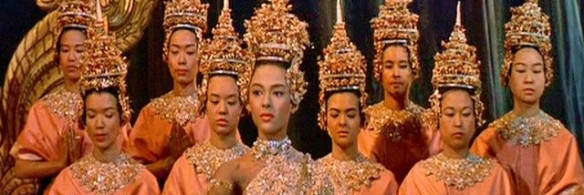






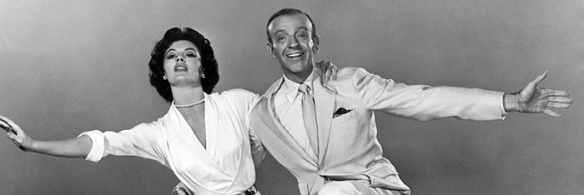
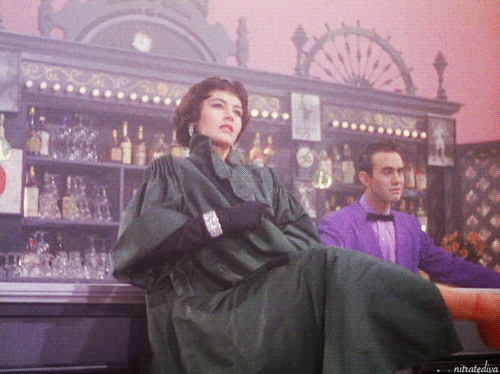
 It’s hard to imagine a time when Sophia Loren wouldn’t have been considered a dazzling beauty. However, at the Montalban Theater in Hollywood for TCM Classic Film Festival, Loren harkened back to her early days as an actress—and her disastrous first screentest.
It’s hard to imagine a time when Sophia Loren wouldn’t have been considered a dazzling beauty. However, at the Montalban Theater in Hollywood for TCM Classic Film Festival, Loren harkened back to her early days as an actress—and her disastrous first screentest.











 “We didn’t know where it was going,” Shirley MacLaine recalled.
“We didn’t know where it was going,” Shirley MacLaine recalled.




 The next day at Club TCM, again in interview with Leonard Maltin, MacLaine elaborated on the pressures of being directed by Wilder. “He was very sarcastic. I see why Marilyn [Monroe] was afraid to come to work,” she said. “He scared the hell out of me. But he taught me how to be self-reliant and how to take criticism.”
The next day at Club TCM, again in interview with Leonard Maltin, MacLaine elaborated on the pressures of being directed by Wilder. “He was very sarcastic. I see why Marilyn [Monroe] was afraid to come to work,” she said. “He scared the hell out of me. But he taught me how to be self-reliant and how to take criticism.”  As for her co-star Jack Lemmon, MacLaine had nothing but positive memories: “He was such a sweetheart. What a wonderful man.” On the set, she would watch Lemmon perform whenever possible: “He really could do anything. He was good, very, very, very good, until the sixth or seventh take. I mean, absolutely sterling.”
As for her co-star Jack Lemmon, MacLaine had nothing but positive memories: “He was such a sweetheart. What a wonderful man.” On the set, she would watch Lemmon perform whenever possible: “He really could do anything. He was good, very, very, very good, until the sixth or seventh take. I mean, absolutely sterling.” MacLaine also mentioned an encouraging foible of Lemmon’s: “He would say, ‘Magic time!’ every time the camera rolled. And then we knew we’d better make some magic.”
MacLaine also mentioned an encouraging foible of Lemmon’s: “He would say, ‘Magic time!’ every time the camera rolled. And then we knew we’d better make some magic.” While discussing the collaborative effort of making The Apartment, MacLaine emphasized a contributor who rarely gets the credit he deserves: Doane Harris. “He was Billy’s secret,” MacLaine insisted. This veteran editor worked on most of Wilder’s greatest films, including Double Indemnity, Sunset Boulevard, and Ace in the Hole, and received credit as an associate producer on The Apartment.
While discussing the collaborative effort of making The Apartment, MacLaine emphasized a contributor who rarely gets the credit he deserves: Doane Harris. “He was Billy’s secret,” MacLaine insisted. This veteran editor worked on most of Wilder’s greatest films, including Double Indemnity, Sunset Boulevard, and Ace in the Hole, and received credit as an associate producer on The Apartment.












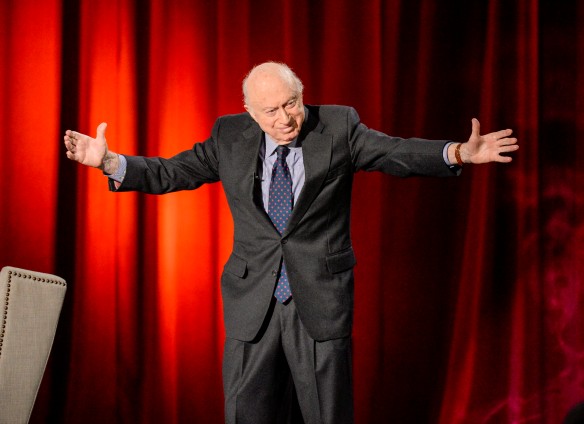











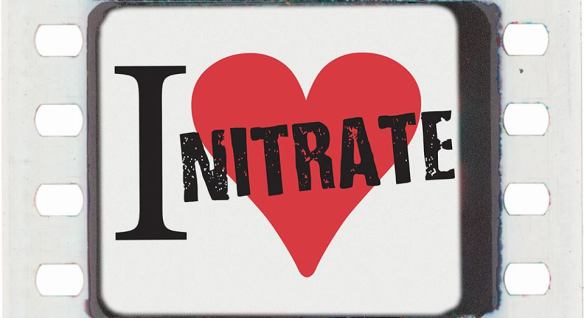







 Leave it to Robert Osborne to articulate something I’ve been struggling with for years: that is, why are old movies better than new ones?
Leave it to Robert Osborne to articulate something I’ve been struggling with for years: that is, why are old movies better than new ones?
















